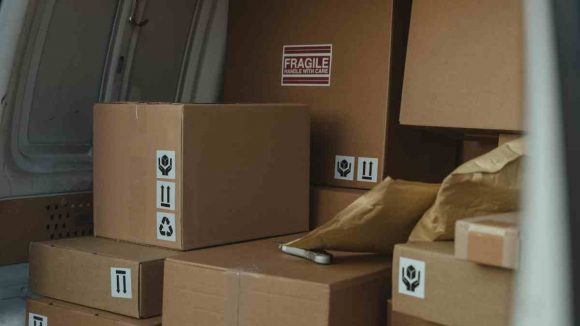Customers return unwanted gifts as early as Boxing Day, with courier companies abuzz with pickups from homes. According to nShift, December 28 is the most popular day for returns. This is closely followed by the 27th and 29th.
Parcel delivery management software nShift has dubbed the most popular day for unwanted Christmas gifts to be sent back as “Returns Wednesday.” Whether consumers will stay with last year’s trend or send parcels back earlier is still being determined.
“When people shop online, they expect to be able to return products quickly and simply. When a retailer does not make their returns policy clear or the process seems cumbersome, shoppers are more likely to abandon their purchase. This may be especially the case when they are buying a gift for someone else,” says nShift’s Philipp Goldberg
Are your returns processing operations in place?
According to ReverseLogistics, planning for this leg of the peak season is essential, as it can quickly slow down the logistical process during peak times. It can be overwhelming when items start flooding in, and employees are overwhelmed with inspections, exchanges, repairs, and things to be re-sold.
To prepare for this, they’ve come up with a checklist:
- Focus on the main objective: If you use a third-party marketplace, your software must efficiently and accurately manage that complexity. Use software to streamline returns. Train employees and try to reduce returns before they happen.
- Time management: Employees must have the right tools to help them with return tasks – to reduce time spent on this. Set up policies that automatically approve, reject, or flag returns.
- Clear returns policy: Review your current return policy and update time and costs. Make sure restocking fees are clearly stated.
Why do e-commerce returns matter?
E-commerce returns can be a disaster that aggressively attacks company profit margins, destroying conversion rates and ultimately threatening your retail company.
In the United States, consumers collectively returned unwanted presents, e-commerce, and retail items bought worth an impressive $817 billion. Totaling over 16% of country-wide retail sales. The National Retail Federation (NRF) estimated that the total cost of returns amounted to a staggering $101 billion.
Unfortunately, this provides retailers with a grim picture. In response to this ill outlook, many retailers have added workers, increased warehouse space, established separate departments to handle the high volume of unwanted Christmas presents, holiday gifts, unwanted items, and clothing items, and improved overall reverse logistics operations.
Effectively handling and managing e-commerce returns is incredibly important. While they can burden your business’s time and finances, e-commerce returns are a crucial part of the online shopping experience for customers.
A seamless and efficient return process contributes to customer satisfaction.
United States e-commerce return rates by industry
E-commerce returns happen across all industries. It’s become a necessary evil for retailers.
Reducing lost sales from returns and customer returns has become a critical priority amongst retailers since 2022.
The National Retail Federation (NRF) reports that for every $1 billion in sales, the average retailer incurs $165 million in returns. In addition, for every $100 in returned merchandise accepted, they lose $10.40 to return fraud.
When asked about the most returned purchases by category, 26% of consumers chose clothing as their answer, followed by bags and accessories (19%) and shoes (18%).
The state of Australian eCommerce returns
Recent data provided by the Australian Post reveals the following:
- In the last 12 months, 26% of shoppers made a return – underscoring the significance of a streamlined return process.
- Younger shoppers are more likely to return items: this number jumps to 39% when looking at 18- to 39-year-olds shopping habits.
- Customers who purchase clothing, cosmetics, jewelry, fashion accessories, and toys will most likely return items.
Why do people return items?
Understanding why customers return can offer insight or potential improvements for your procedures.
Unsurprisingly, the top reason is that it didn’t fit well (47% of returns), highlighting the importance of having detailed descriptions, images, and sizing info available. 28% of shoppers returned items due to them being faulty/incorrect – which puts quality control and accurate order fulfillment under the microscope. And just 9% of shoppers use the ‘multi-size strategy,’ buying several sizes of the same item at once, returning the ones they don’t need.
The good news is shoppers are still making a return, with 81% of people saying they found their last return to be easy. However, having to pay for return shipping, an inconvenient drop-off, uncertainty over packaging, or delays in receiving a refund are all reasons they give for a less-than-ideal return.
By addressing these complications and offering solutions like pre-printed return labels or satchels, convenient drop-off locations, or transparent refund policies, retailers can offer the best experience possible to customers.
When asked why they returned items, PowerReviews found that 81% of online US shoppers said the item was damaged or defective. Other causes include:
- Item doesn’t fit (75%)
- Item doesn’t match the description (56%)
- Don’t like the item(s) (33%)
- Ordered multiple items/sizes (14%)
- Item arrived late (11%)
E-commerce returns and the holiday season
The number of returns mirrors peak e-commerce sales periods. The Christmas holidays, for example, is the most popular time of year for online shopping. Gift givers and family members flock to online retailers, Facebook marketplace, eBay, and local stores such as Best Buy and their local charity shop to purchase gifts for each family member and friends. In 2022, holiday online sales reached over $240 billion.
On average, holiday returns averaged around 17.9% each year. Whether it’s gifts a friend doesn’t like, family members returning holiday gifts, or trying to reclaim some money they spent in a holiday-inspired splurge in the form of store credit, it’s why e-commerce brands receive the most returns from December to February.
Most stores offer free returns and no restocking fee to improve customer satisfaction. However, a gift recipient needs to ensure that each store has a free returns policy or what each store’s return policies are. Some stores will only accept items in original packaging, while the rest will have a different approach.
Returning unwanted gifts can be an easy process that allows the gift receiver to return them, most times for money or offer store credit. When a store has to process a gift or present return, they will require a receipt from the original purchaser to exchange most items for in-store credit.
Peak season sales in 2023
The National Retail Federation (NRF) expects holiday spending to reach record heights this year. It’s expected to grow by 4% to $967 billion.
“It is unsurprising to see holiday sales growth returning to pre-pandemic levels. Overall household finances remain in good shape and will continue to support the consumer’s ability to spend,” says NRF CEO Matthew Shay.
According to the NRF’s statistics, holiday sales have almost doubled over the last ten years. Holiday sales spiked to a record high during the COVID-19 pandemic. In 2020, consumers purchased 9% more items than the previous year, and in 2021, spending increased by nearly 13% in November and December.
There are concerns from retailers and business owners in general that consumers will spend less this year due to inflation, higher gas prices, and stringent credit conditions. But NRF chief economist Jack Kleinhenz believes consumers remain in the driver’s seat despite elevated interest rates.
“We expect spending to continue through the end of the year on a range of items and experiences, but at a slower pace. Solid job and wage growth will contribute to this holiday season, and consumers will be looking for deals and discounts to stretch their dollars,” says Kleinhenz.
Best practices for improving your returns process
Reverse logistics and returns management are crucial to any online retailer’s supply chain. According to a report by Accenture, returns can account for up to 20% of an online retailer’s total sales, and the cost of processing returns can range from 10-15% of the cost of goods sold. The 5 best practices you can implement in improving your returns process and return policies are:
- Streamlining the return policies and the returns process
- Automating returns management
- Prioritizing customer experience in returns
- Analyzing returns to reduce costs
- Efficiently managing returned items
Optimizing your reverse logistics and returns processes is essential for online retailers to maintain customer satisfaction and loyalty while reducing costs. By streamlining the returns process, automating returns management, prioritizing customer experience, analyzing returns data, efficiently managing returned items, and implementing the correct return policies, you can improve the efficiency and effectiveness of your reverse logistics process and ultimately improve your bottom line.
About the author
Mia is a multi-award-winning journalist. She has more than 14 years of experience in mainstream media. She's covered many historic moments that happened in Africa and internationally. She has a strong focus on human interest stories, to bring her readers and viewers closer to the topics at hand.











